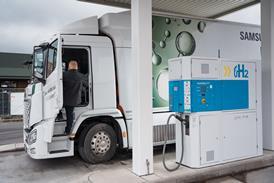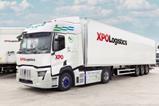Fleet managers are in danger of buying electric vans that are not fit for purpose because the labelling system for their range is inaccurate, according to the Association of Fleet Professionals (AFP).

The business group said inaccuracies in Worldwide Harmonised Light Vehicles Test Procedure (WLTP) figures have been exposed this winter, with operators complaining that the 200-mile cited range of their newly purchased e-LCV did not reflect the 100-mile range they were experiencing in real-world, cold conditions.
The AFP said it meant official data was at best inaccurate and at worst, is encouraging operators to make expensive mistakes and buy vans that were not fit for purpose.
Paul Hollick, AFP chair, said WLTP labelling for vans needed overhauling to cover not just a load-free vehicle in warm conditions, but also a variety of payload and weather variations.
“Ideally, we’d end up with a grid that perhaps showed how vans operated with no load, a medium load and a full load in warm, normal and cold conditions,” he said.
“Also, it would be useful to know something about towing capacity. This is not a complex or onerous request but a fundamental one bearing in mind the technology.
“Ultimately, having an accurate idea of how electric vans will perform in real world conditions is critical to their successful adoption. Fleet managers can’t make informed buying decisions without having a good indication of range. Instead, they are coming into work on cold mornings and finding that the routes they had planned are unviable, sometimes creating huge difficulties.”
Hollick added that operators relying on electric vans to transport light loads on local routes were unlikely to encounter problems, but if firms were purchasing these vehicles because they needed a 200-mile range, then they could find they don’t meet their requirements.
“What we need to happen is for the WLTP standard for electric vans to change but as the agreement is made at a United Nations level, bringing that pressure to bear is extraordinarily difficult, especially in a short timeframe,” he said.
Last year, Arval released research showing that towing reduces an electric vehicle’s range by between 2% and 31% against real-world figures.
Arval UK LCV consultant, Simon Cook said: “If your fully-charged van range is typically 120 miles unladen, then you’re looking at a 83-91 mile maximum while towing.
“If you’re already operating on the basis of a range while at 100% payload and a range of 105 miles, then the impact of towing will be a 14-22 mile decrease.”


















